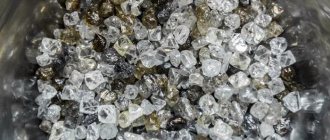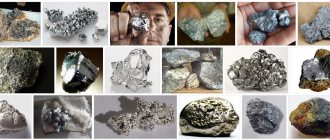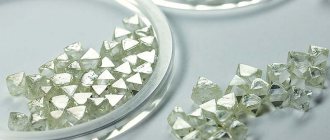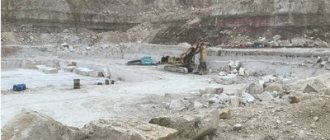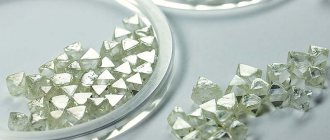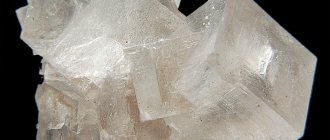Despite the small number of enterprises involved in the extraction and sale of salt, the Russian salt industry plays an important role not only on the scale of our country, but also on the world scale. It is included in the list of 20 states engaged in this type of activity. At the same time, on the territory of the Russian Federation there are several large deposits in the world, including Eltonskoye and Baskunchakskoye.
Place of Birth
When discussing where salt is mined in Russia, let’s take a closer look at the main deposits. At the moment, on the territory of the Russian Federation, production is carried out by lake, vacuum, and mine methods.
First, let's find out where salt is mined in Russia using the mine method. Among the main areas of such production, the leaders are:
- Turekskoye field, located in the Irkutsk region.
- Sol-Iletskoye field, located in the Orenburg region.
Where is salt mined in Russia using vacuum technology? At this time, such mining is used only in the Irkutsk region (at the Usolsky plant).
Where is salt mined in Russia using the lake method? Similar developments are being carried out in the Altai Territory and Astrakhan Region.
Industry problems
Despite the fact that the salt industry plays an important economic role for the country and the world as a whole, it is experiencing certain problems that affect its development. Experts identify two of the most serious.
The first is the high cost of transportation to the consumer. Most often, a railway track is used for this. However, high tariffs do not allow manufacturers to fully sell their goods to the end buyer. As a result, companies reduce the operating capacity of the enterprise, extracting and selling only part of the available product.
The second is benefits for foreign manufacturers. Russia's policy is aimed at maintaining the import of those types of goods for which there are no raw materials in the country for independent production. However, the raw material base of the salt industry is abundant. The intense competition emerging in the market does not allow Russian enterprises to take leading positions in sales to their own consumers. As a result, firms lose profits, and the state loses monetary and financial resources.
Specifics of the mine method
Having found out where rock salt is mined in Russia, we will dwell in more detail on the features of each technology. First, geological exploration work is carried out, only after this the construction of special mines begins.
Salt is located at different depths from the surface of the earth in the form of layers. Depending on the deposit, the location of table salt varies between 250-800 meters. Drilling is carried out to the layers, the placement of equipment and people is taken into account so that the salt can be raised to the surface of the earth.
In our country, special salt harvesters are used for such purposes. They move along the seam, cutting the ore. They are used where potassium salts are mined in Russia. Salt ore moves along conveyor belts to the mine shaft. Next, the ore is lifted using special skip machines, crushed, and purified from impurities. The final product of extraction is table salt.
Since salt is a solid compound, there is a high probability of explosions in the mine. That is why strict requirements have been developed for safety equipment used in production.
The role of industry in the Russian economy
The salt industry is not just an industry that provides consumers with an important food product. Enterprises engaged in this type of activity provide raw materials to a large number of industrial companies, plants and factories.
The total capacity for salt extraction and processing ranges from 9 to 13 million tons per year. However, only a few companies belong to the Russian Federation. Most of them are managed by foreign investors. Therefore, they are gradually replacing domestic production, reducing their capacity to 50-70% (in some cases).
Russia has a great need for technical salt, which is subsequently used as raw material for other industries. For example, due to the harsh climate, huge volumes of salt mixtures are used annually for road work when icy conditions or frosts occur.
Another area is the oil industry. If it is necessary to soften icy soil during mining, then salt becomes an effective and inexpensive means. In addition, it is actively used in the animal world, in the form of food, everyday life or construction. Agriculture and forestry consume large amounts of salt every year.
Thus, according to statistics, the majority (about 90% of the total share) goes to the needs of industry, and only 10% remains for households. The greatest demand for salt in Russia and in the world as a whole comes from the food and chemical industries. In addition, the products are actively used in the energy and pulp and paper industries.
Vacuum salt extraction method
Having found out where in Russia food salt is extracted using the vacuum method, we will try to identify its distinctive characteristics. This technology is much safer; finely ground salt, known to consumers under the “Extra” brand, is produced in a similar way.
The essence of this technology is to drill a well in the place where deposits of table salt were discovered during geological exploration. Fresh water is pumped into completed wells. After a certain period of time, when the salt is washed away by water, the mass is pumped to the surface. The saturated brine solution is purified and then poured into vacuum chambers. After applying high temperature, the brine boils, water evaporates, and sodium chloride crystals form. Using a centrifuge, liquid is separated from the particles and table salt is collected.
Salt mine of Soligorsk. Belarus
In 1949, salt mining began in the vicinity of Soligorsk. A total of five mines were founded, in which a useful mineral with a high potassium content was mined. Today, only one deposit is operational, and the rest are used for treatment and halotherapy. In the depths of the mine there is dry air, which is saturated with salt ions. Such conditions have a beneficial effect on the respiratory system. Children living in regions affected by the Chernobyl accident undergo health procedures here.
The place has become a real place of pilgrimage for people with respiratory problems. These are real treatment centers that are closed to tourists.
3
Features of the lake mining method
This method of obtaining table salt is considered the simplest and safest. For example, in the Astrakhan region (on Lake Baskunchak), industrial salt production is carried out on an area of about 55 hectares; its scale is estimated at 2-3 million tons annually. Geologists were able to establish that the lake is located on top of a huge salt mountain, the height of which is several thousand meters deep.
Scientists claim that the reserves of sodium chloride in this deposit will last for at least 1,500 years.
Currently, salt is mined from a depth of about 5-10 meters. First, salt harvesters move along railway tracks laid on the surface of Lake Baskunchak. They destroy the salt layer, then it is crushed and collected. The technological process consists of enrichment and dehydration of salt. Next, it is loaded into a freight car moving along railway tracks parallel to the combine. Such machines are capable of extracting about 300 tons of table salt per hour. Such combines select ore sequentially, in layers from top to bottom. The places where the layer was removed are filled with salt brine. The peculiarity of this option for extracting table salt is that periodically the railway tracks are dismantled and transferred to a new extraction site.
The process of salt extraction using the lake method is carried out only in a specific season, associated with the cycle of formation of salt sediment at the bottom of the lake.
Mining of pink salt in Crimea has recently been resumed. This unusual color is given to the salt by the algae Dunaliella salina.
It is this salt that many nutritionists consider beneficial for the human body and recommend it to their patients as a preventive measure. During research, many useful microelements were discovered in its composition. Let us note that many workers employed in this salt production did not suffer from sore throats or colds.
Development prospects
Experts say that the Russian salt industry has good opportunities for development. This area is considered attractive to investors, since Russian salt deposits are unique and have no analogues in the world.
It is possible that the salt industry, with the active development of the food industry, will increase its momentum.
Another prospect is modernization. If enterprises replace outdated technologies and equipment, mining and processing will become more efficient and profitable. At the same time, production will be profitable and maximally loaded.
If the state and the owners of enterprises adopt appropriate standards, then Russian manufacturers will be able to push foreign suppliers from Ukraine, Belarus and other countries out of the domestic market.
Salt Cathedral of Zipaquira. Colombia
At a depth of 200 meters near the Colombian town of Zipaquira there are workings of salt mines. An amazing salt cathedral was created among the mineral deposits.
It does not have a bishop, and therefore the Catholic Church does not recognize it as an official place of worship. But every Sunday a service is held here, and thousands of tourists come to see the unique tourist site.
In addition, there are exhibits on salt mining. There are beautiful sculptures next to the museum exhibits. All this is part of the huge tourist complex “Salt Park”.
4
Sondershausen. Germany
Photo source: Jens-Ulrich Koch / AFP / Getty Images
Near the small German town of Sondershausen, salt was mined for many years, which is why numerous tunnels and galleries were formed underground.
There is an underground salt lake here, where anyone can take a boat ride. They built a slide from which you can go down on a kind of sleigh. Concert and ballrooms were equipped deep underground. Famous symphony groups give concerts here every year.
In 2007, a cyclist race was held under the arches of salt caves at a depth of 800 meters. In general, athletes often use underground workings for training. The air is clean and healthy.
7
Nemocon. Colombia
Photo source: lifeglobe.net
In the historical Nemocon mine, archaeologists discovered tools and ceramics from the 4th century BC. Then other tribes came and brought salt production to a high level.
The Muiska Indians were even called the salt people. It was they who began to mine salt on a large scale in these places. Now thousands of tourists come here to plunge into the surreal landscapes of underground passages and labyrinths. In the depths there is a small church carved out of salt, consecrated in honor of the Virgin Mary. Under the arch, a huge heart was carved out of salt. The interior lighting turns it red. In addition to caves, there are underground lakes. Ancient workings have become a new destination in Colombia's tourist routes.
9
Wieliczka Mine. Poland
One of the oldest deposits of rock salt, which began to be mined in this part of Eastern Europe back in the 13th century. In the second half of the 20th century, mining ceased, and the amazing deposit became a medical center and tourist attraction.
On seven underground levels there are long galleries and vaulted corridors. The entire length of the underground passages is more than 200 km. In the mid-twentieth century, a sanatorium for the treatment of lung and bronchial diseases began operating here.
Miners carved out four chapels, and Polish sculptors descended here to create amazing sculptures from salt. There is even a hall that can be rented for weddings and other celebrations.
Bochnia mine. Poland
Photo source: Sebastian Mierzwa, CC BY-SA 3.0 PL, via Wikimedia Commons
Salt mining here began back in 1278. During this time, caves and labyrinths formed underground. A small village was formed not far from the deposit.
In the Middle Ages, salt was highly valued, and therefore the town grew rapidly. Salt was transported from here to all corners of the Old World. Over time, the Polish kings took control of the salt mines, and the profits became an important source of replenishment for the state treasury.
In 2000, by decree of the President of Poland, the mine became a monument of national significance. The ancient workings have been turned into museums where you can learn about the history of salt mining. The site became so popular that UNESCO added the ancient mines to the World Heritage List.
11
Mine "Pride". Romania
Tourists coming to the homeland of Count Dracula are sure to visit the underground city. It was formed as a result of salt mining in a field in the central part of Romania.
An amusement park was built 120 meters underground, there are restaurants and cafes, and souvenir shops. You can walk through numerous labyrinths to see the beauty of the underground kingdom. There is a small church. A regular bus takes tourists underground. He takes you to the place where tickets are checked, and then only on foot.
In addition, treatment centers have been established here. Thousands of people come to breathe the ionized air of the ancient salt mines. Most-Beauty strongly recommends visiting this place to all guests of Transylvania.
8

